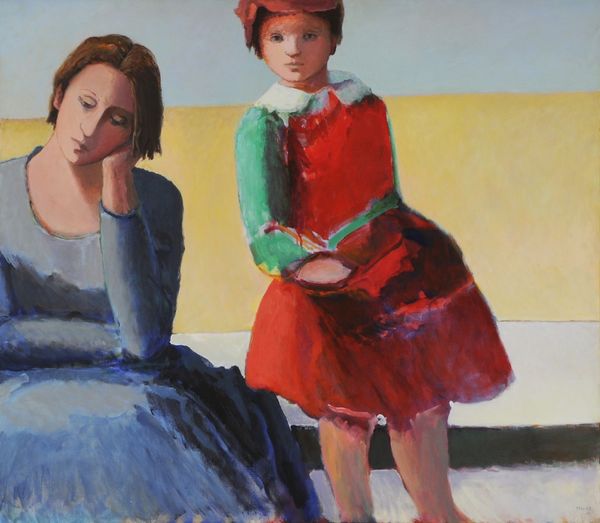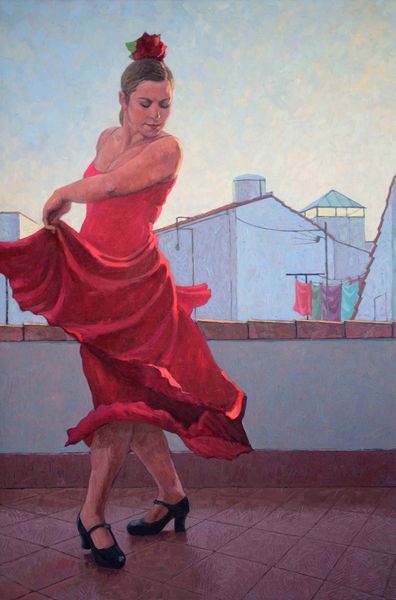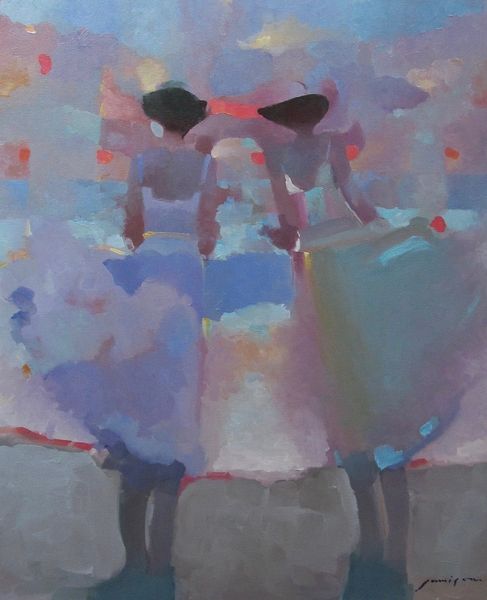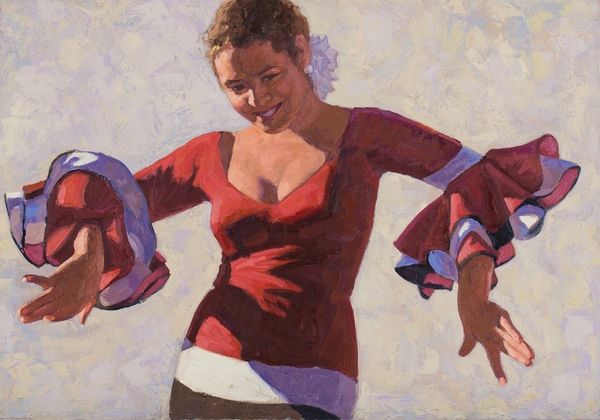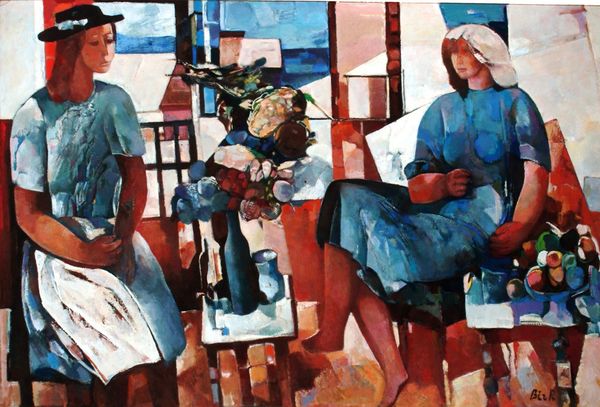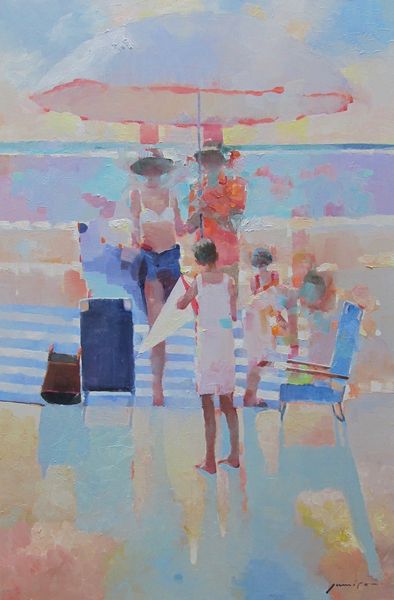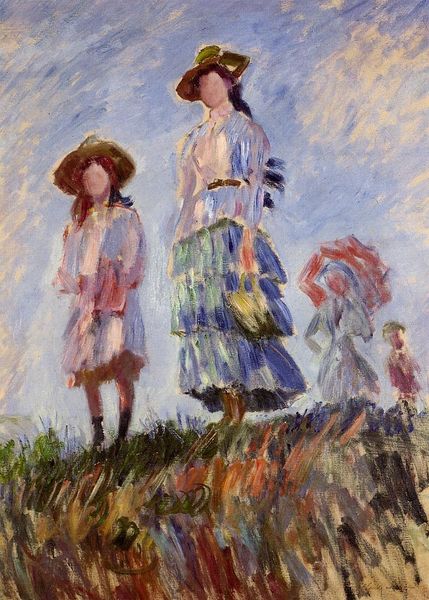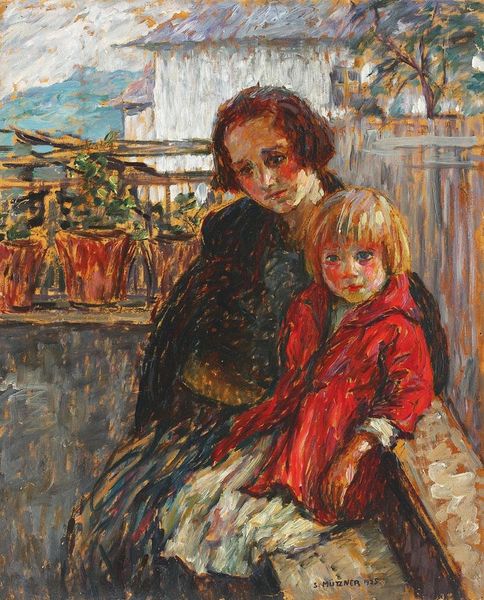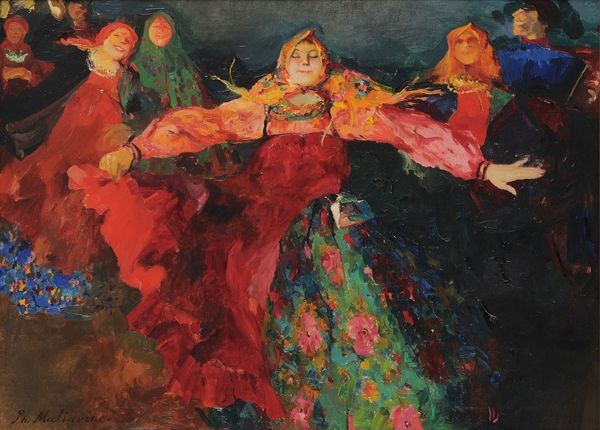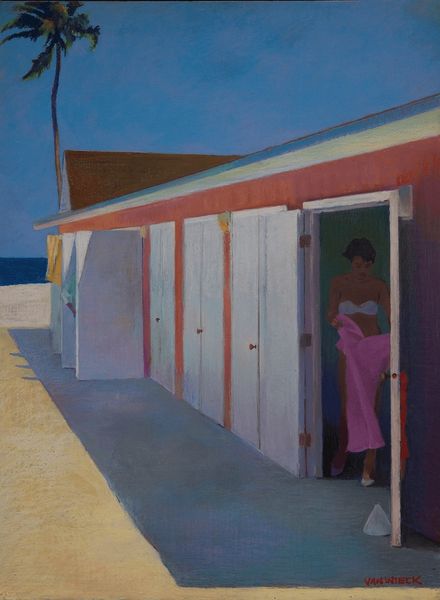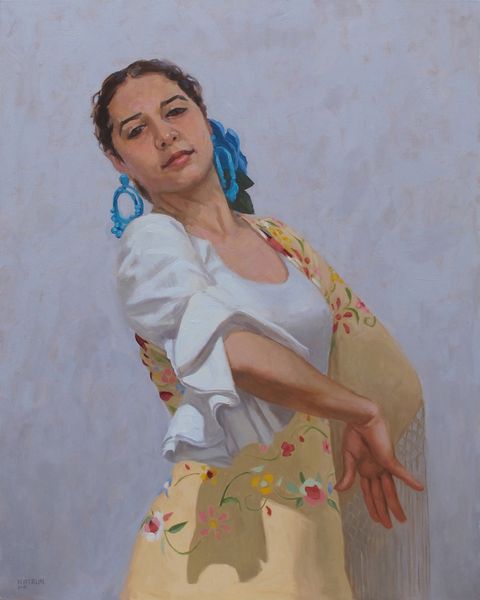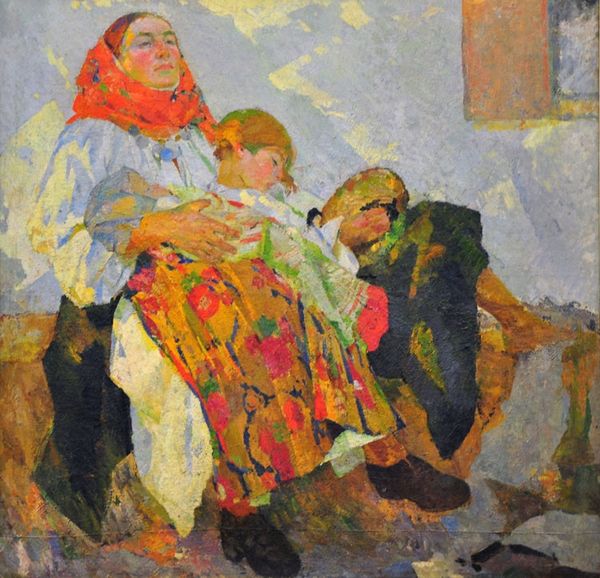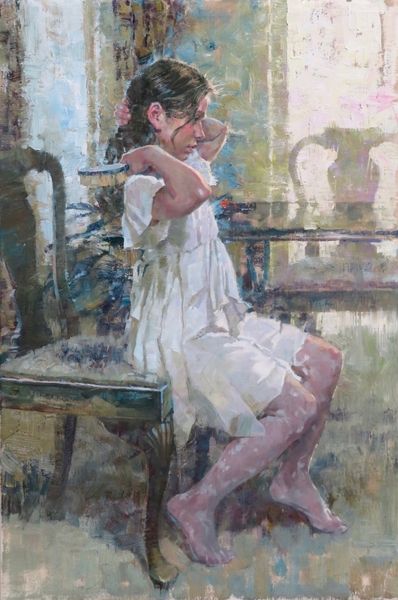
painting, oil-paint
#
portrait
#
painting
#
oil-paint
#
figuration
#
oil painting
#
neo expressionist
#
genre-painting
#
realism
Copyright: Modern Artists: Artvee
Curator: Melissa Hefferlin's oil painting, seemingly titled "Learning the Steps," offers a delightful study in figurative form. Editor: The first impression is airy. Despite being representational, there’s a flatness to the composition, an almost dreamlike quality to the depiction of these two figures against the stark blue. Curator: Precisely. Note the composition—how the eye is led diagonally from the top right, down the line of the lead dancer’s form to the lower portion of the canvas. The treatment of light and shadow, though realistically rendered, serves primarily to define the geometric relationships within the frame. Editor: I’m more struck by the materiality, really the labor embedded within the work itself. Oil paint has its own distinct qualities that I'm quite attuned to, and this seems to play with this unique nature of applying pigment suspended in slow drying oils and creating effects with texture. Just the time to render all of those polka dots must have been considerable. Curator: Yes, the textural qualities of the paint are notable, particularly in the treatment of the ruffled skirt. I would propose we interpret it through the lens of semiotics— the white shirt, the flower, the gesture: Each is a signifier loaded with meaning, contributing to our understanding of tradition and culture. Editor: And I'd counter that tradition is *made*, through repeated physical acts. It’s fascinating to think about the material construction of the dress itself, and the embodied knowledge necessary to create the garment in order for such rituals to take place in the first place. Curator: An insightful observation that introduces ideas around societal ritual and artmaking. I concede that the work functions effectively on multiple layers. Editor: I think understanding "Learning the Steps" through labor helps us better appreciate these two women depicted—artists in their own right— engaged in both the labor of dancing and the reproduction of cultural values. It also reinforces how painting, itself, is another type of labor: each medium, brushstroke, and choice contributing to a larger history of creative production.
Comments
No comments
Be the first to comment and join the conversation on the ultimate creative platform.
